Repeating simple designs or motifs is an effective way to make iconic compositions that catch the eye, and you can take this technique to its extreme to produce abstract art where the pattern itself becomes the subject of the art and not just a tool for rendering figures.
Karla Conmy’s River Meanders mosaic is a good example of repeating motifs taken to the level of abstraction, and Sally Scardino’s Hummingbird mosaic is a good example of using a repeated motif to make a figurative composition stronger.
Iconic Compositions
Artist Sally Scardino emailed my some photos of her Mosaic Hummingbird right when I was looking for a good example to show how much stronger a composition could be when repeating patterns were used. The sharp petals of the flowers echo each other and the tips of the hummingbird’s upturned wings so that the work as a whole has continuity and a visual theme.
Yes, you could make a very interesting composition by including different shapes and varieties of flowers, but the dirty little secret is that repeating simple patterns are easier to make than coming up with different types of patterns, and they make the artwork stronger because our brains are built at the fundamental level to recognize repeating patterns.
In other words, this is a technique that beginners could leverage to make their artwork better while they are still developing basic skills.
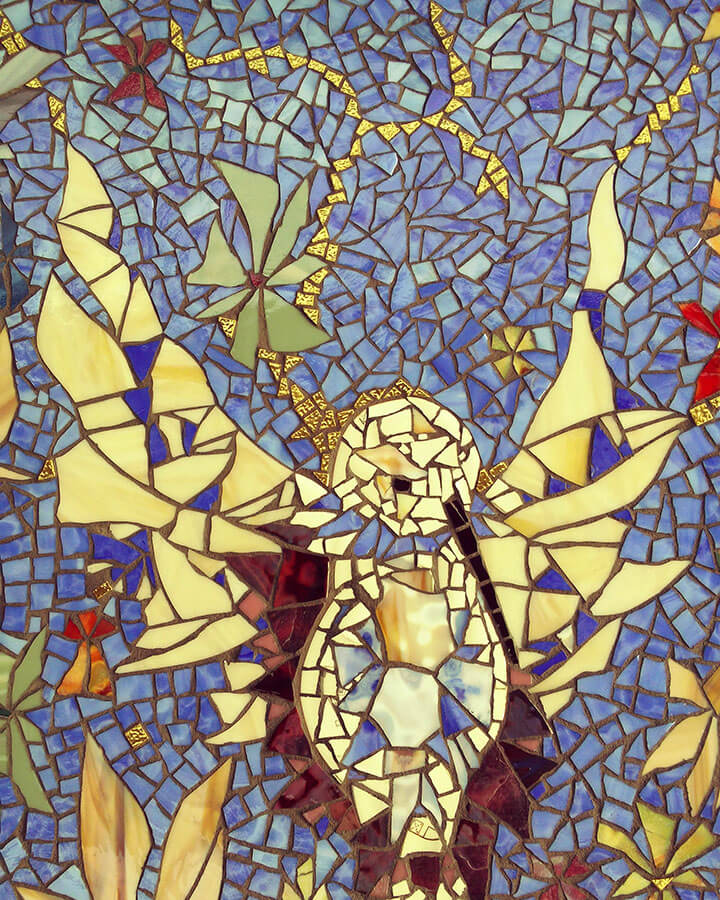
All that being said, there is more to Sally’s mosaic than the repeated motif of sharp petals. Like all true artists, Sally couldn’t help but add extra details to make her work more interesting. Notice the seams of gold glass mosaic and the millefiori and glass gem berries, and the other small details Sally added to make her piece more interesting.
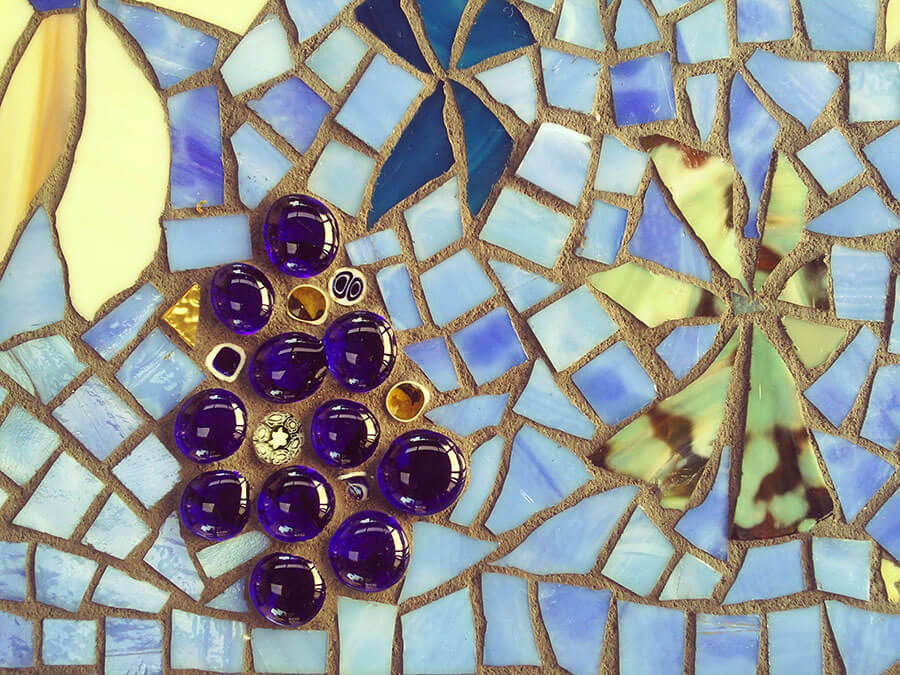
IMPORTANT TIP
I think my favorite detail is Sally’s use of mottled stained glass for the petals of this one small flower above.
But now go back and look at the picture of the entire mosaic and notice that the flower doesn’t stand out from the background as strongly as the other flowers.
This is mainly because the green doesn’t contrast blue as strongly as yellow does, but the mottling of the glass also contributes to making the flower less sharp and “pushed toward the back” visually. Keep this in mind when you need render something in the background or middle distance.
Avoid Clones
Repeating motifs can also be an opportunity to explore variations on a theme, which is an effective learning exercise if you pay attention to each variation and do more than make clones.
Notice how each flower is unique and interesting in spite of all having the same general form: radial flower with a countable number of sharp petals, either cornered or pointed but not oval.
There aren’t any tufts or vases or fronds or all the countless shapes flowers come in. There is only one shape used, but each flower is still different because it was made by an artist who was really into what they were doing and not just trying to get done.
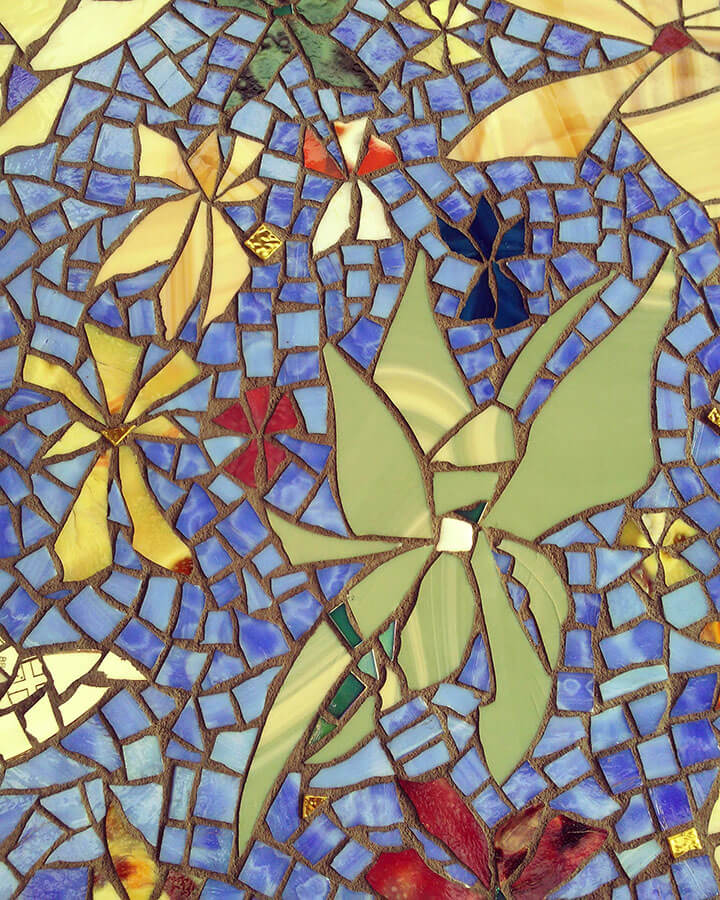
Abstract Art
The line between realism and abstract art is a little blurry because you can always zoom in (or out) of many natural forms until all that is left is a repeating pattern.

Artist Karla Conmy said that one day she was watching a biography of the famous Russian ballet dancer, Rudolph Nureyev, who was born in a tiny village in Siberia, and after the program she looked up the village in Google Earth. Karla said she was awed by what she saw: the river meanders old and new and how the river had carved the land as it changed course over time, and it inspired her to make a mosaic of the meanders.
Karla’s mosaic can be seen as faithful depiction of geographic forms, but it also works as an abstraction. I like it very much, and it is a great example of how noticing the details and patterns around us is all you need to be inspired to make interesting art.
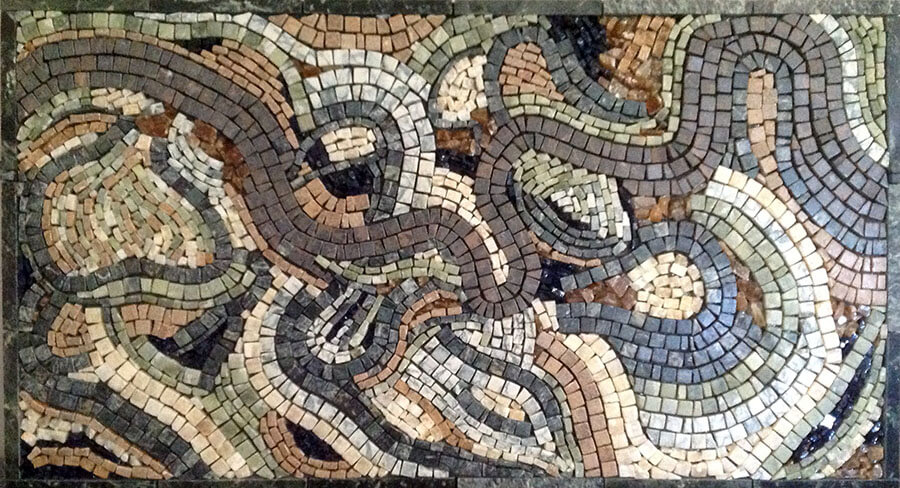
Note that although Karla used marble mosaic tile for her River Meanders mosaic, you can also make some fairly rustic mosaics with ordinary vitreous glass by restricting yourself to less intense colors. Keep that in mind if you are ever wanting the natural feel of stone but want something more affordable and much easier to cut. Glass is also frost-proof, while stone is not because it is porous. Stone is also vulnerable to acids in soils and rainwater.

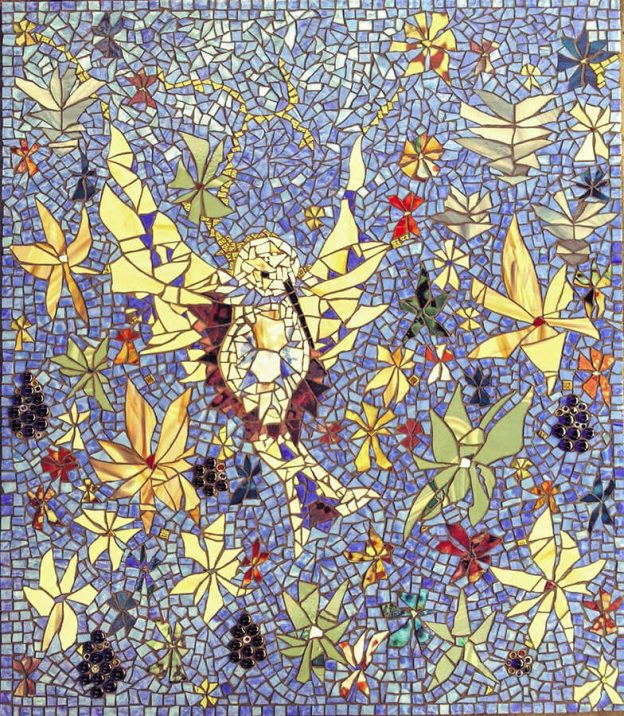
Leave a Reply